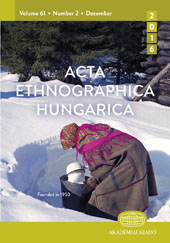Presentation of workers’ living in an open air museum
Presentation of workers’ living in an open air museum
Author(s): Paula LeinonenSubject(s): Museology & Heritage Studies, Economic history, Ethnohistory, Social history, Human Resources in Economy
Published by: Akadémiai Kiadó
Keywords: Amuri Museum of Workers’ Housing; workers’ living; communal kitchen; depicting workers’ conditions; building a museum; problems in creating a museum; guided tours; activities;
Summary/Abstract: The district of Amuri was created when a heavily industrialized city required new workers during the latter half of the 19th century, a time when the shortage of housing was serious. Barrack-like, onestorey timber buildings were built in Amuri which had a typical communal kitchen, shared by four families. Amuri was in its bloom during the first decades of the 20th century. Reforms were made during the 1950s and 1960s. The decision of demolishing the district was made and one housing block was saved in order to be turned into a museum. Changing the housing block into a museum meant decorating and furnishing over 50 rooms into workers’ living quarters as well as shops, a bakery and a sauna. The living quarters were dated from the 1880s to the 1970s. This work required a wide knowledge of how the workers lived. Gathering material was sometimes like detective work. It was also necessary to get insight into the lives of various families who lived in different circumstances and times in history. The exhibition in the museum is a permanent one so new things have been introduced by providing special guided tours, activities and having different craftsmen demonstrating their work.
Journal: Acta Ethnographica Hungarica
- Issue Year: 55/2010
- Issue No: 2
- Page Range: 417-432
- Page Count: 16
- Language: English
- Content File-PDF

